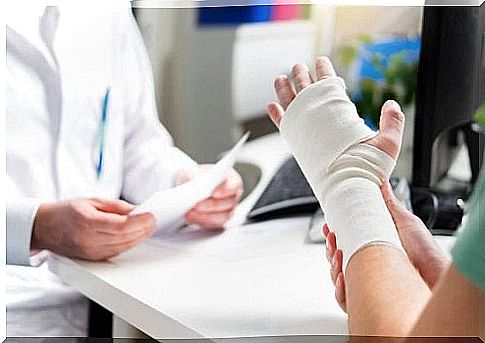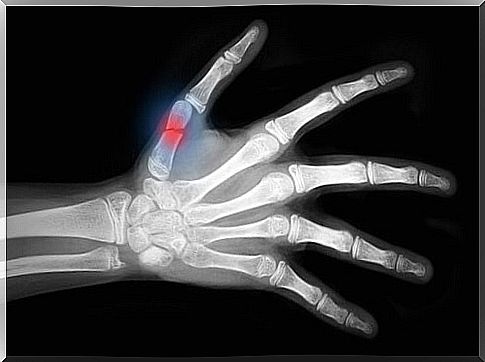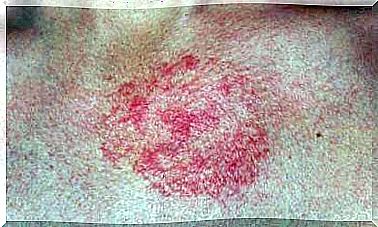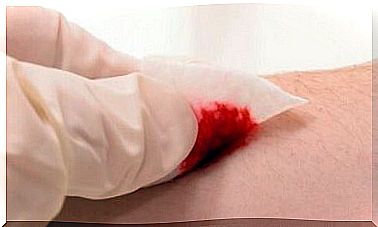Degloving Injuries: What Are They And How Are They Classified?
In medicine, traumatic injuries that tear away the soft tissues of the skin over large areas and expose the bone are called “ degloving injuries ”. These generally mainly affect the extremities.
They are also called detachment, avulsion, tearing or dislodging injuries. The consequences they produce, in most cases, have no solution. When these types of traumatic injuries occur to the head or torso, they are usually fatal.
Classification of degloving lesions

Classification of soft tissue injuries can help to understand their true extent and implications. The Tscherne classification is used —described in a study published in Colombia Médica in 2014, among other publications— and takes tibia fractures and their associated soft tissue injuries as an example.
According to the Tscherne classification, soft tissue injuries are grouped into groups depending on the degree:
Grade 0
Grade 0 injuries occur in low-energy fractures, such as spiroid fractures of the tibia in skiers. In them, there are no obvious clinical signs of injury.
Grade I
In this group, injuries appear when fractures occur with moderate energy. An example of a grade I injury is ankle dislocation fractures. The released energy produces mild to moderate soft tissue contusion.
Soft tissue injuries can also occur from the pressure that the fracture fragment exerts on them.
Grade II
As for grade II injuries, they originate from a high-energy mechanism. An example of this type of soft tissue injury is segmental closed tibial fractures from traffic accidents.
In these cases, the soft tissues absorb a lot of energy at the moment of impact, resulting in a deep contusion. Impending compartment syndromes are also included in this category.
Grade III
Finally, there are grade III injuries. These are associated with serious skin and muscle damage, such as:
- Vascular lesions.
- Advanced compartment syndromes: It is a serious condition that involves increased pressure in a muscle compartment. It can lead to nerve and muscle damage, as well as problems with blood flow.
- Crush injuries.
- Degloving injuries .
As we can see, degloving injuries are within the most serious group of the classification of soft tissue injuries.
Tscherne Classification Advances

Tscherne’s classification has recently been expanded. In this expansion, a five-point scale is used that independently quantifies the severity of skin, muscle-tendon and neurovascular injuries.
This classification is more precise than the previous one to describe degloving lesions . However, most authors still use Tscherne’s.
Although classifying soft tissue injuries can be helpful, in reality, their severity increases on a continuous scale, making it often difficult to classify a particular injury reliably.
Treatment of degloving injuries
Soft tissue recognition and management is one of the most important aspects of treatment. Of course, the assistance of a health professional is essential and urgent in these cases.
Lesions that belong to the grade II and III range according to the classification explained in the previous section generally evolve better when using a temporary external fixator and delaying surgery.
In this sense, degloving injuries almost always require major surgical interventions. Additionally, a study published in the Journal of Emergencies, Trauma and Shock points out the importance of a multidisciplinary approach. Some treatment options include:
- Reimplantation: consists of putting together parts of the body that have been amputated. For example, fingers of the hand.
- Revascularization: blood supply to areas that suffer from a high lack of blood flow.
When this is not possible, skin grafts or flaps are made. However, sometimes the limb or limbs cannot be preserved and an amputation must be performed.
Degloving injuries : final recovery
Ultimately, the procedure chosen will depend on the circumstances of each case and the assessment made by the medical team.
As a last step, after performing the surgery, the patient will have to resort to postoperative physiotherapy sessions. As detailed in the cited sources, the possible sequelae will depend on the severity of the injury and the type of treatment used.









